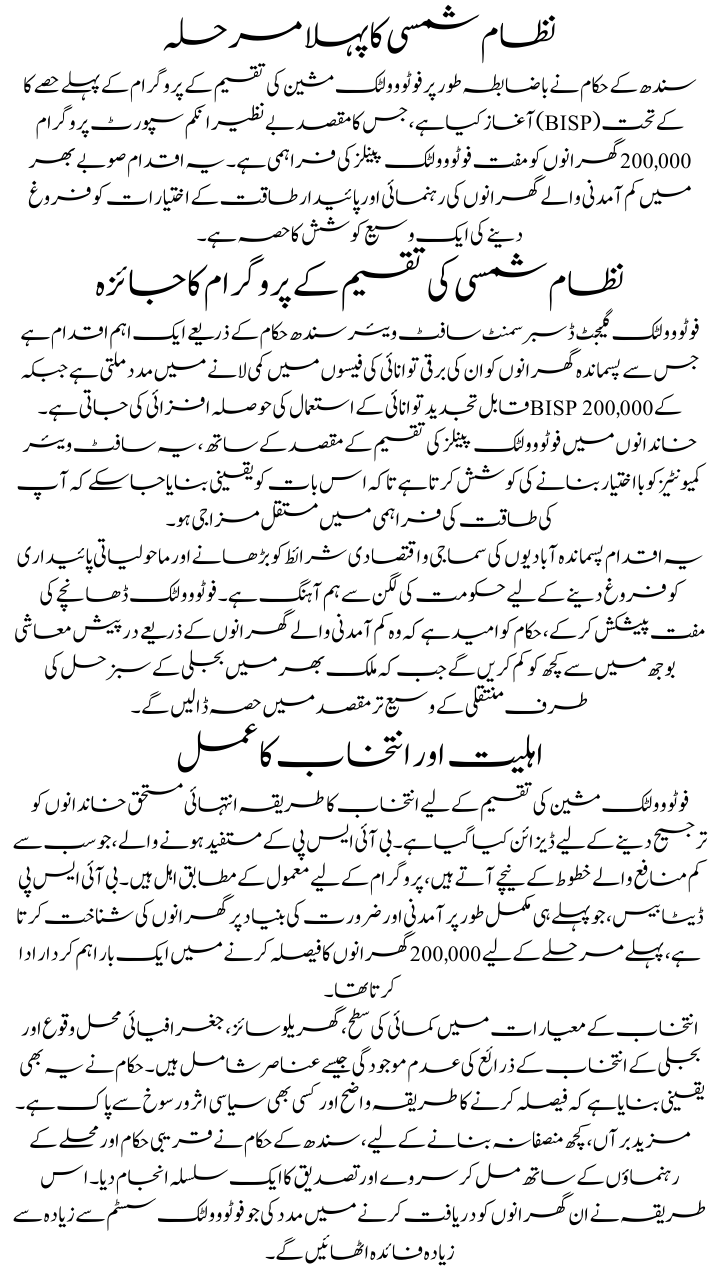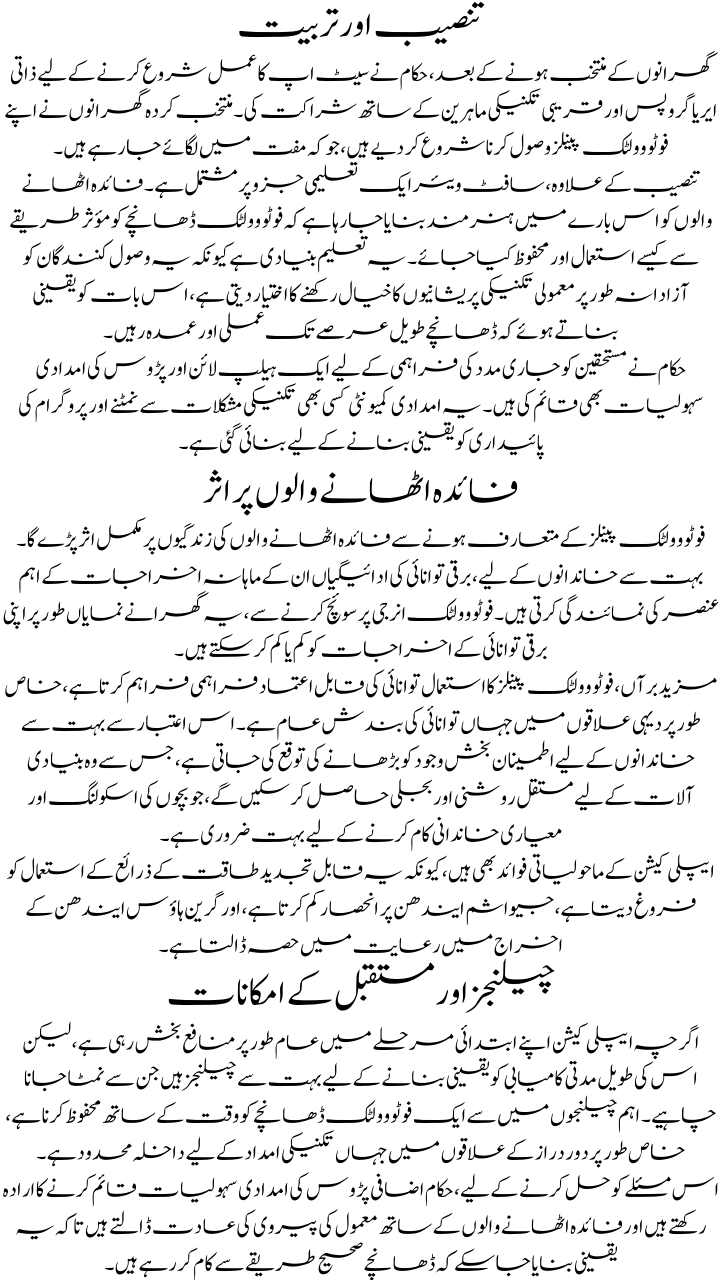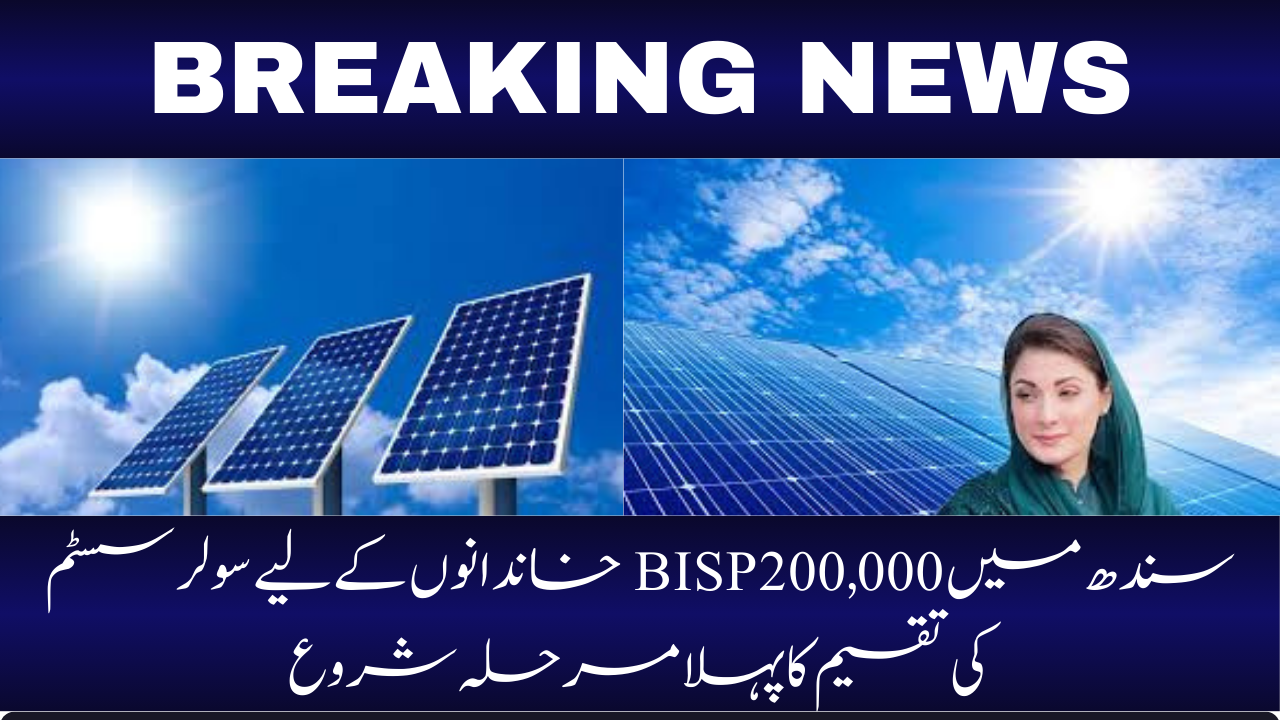1st Phase of Solar System
The authorities of Sindh has formally launched the first section of the photo voltaic machine disbursement program, aimed at supplying free photo voltaic panels to 200,000 households underneath the Benazir Income Support Program (BISP). This initiative is section of a broader effort to guide low-income households and promote sustainable strength options throughout the province.
Overview of the Solar System Disbursement Program
The photo voltaic gadget disbursement software is a important initiative via the Sindh authorities to assist underprivileged households decrease their electrical energy fees while encouraging the use of renewable energy. With a goal of distributing photo voltaic panels to 200,000 BISP families, the software seeks to empower communities by using making sure a consistent and within your means strength supply.
This initiative aligns with the government’s dedication to enhancing the socio-economic prerequisites of marginalized populations and promotion environmental sustainability. By offering photo voltaic structures free of charge, the authorities hopes to alleviate some of the economic burdens confronted via low-income households whilst contributing to the broader countrywide aim of transitioning to greener electricity solutions.
Eligibility and Selection Process
The choice method for the photo voltaic machine disbursement is designed to prioritize the most deserving families. Beneficiaries of the BISP, who fall underneath the lowest profits bracket, are routinely eligible for the program. The BISP database, which already identifies households based totally on earnings and need, was once instrumental in deciding on the 200,000 households for the first phase.
The choice standards encompass elements such as earnings level, household size, geographic location, and the absence of choice electricity sources. The authorities has additionally made certain that the decision manner is obvious and free from any political influence.
To in addition make certain fairness, the Sindh authorities performed a sequence of surveys and verifications in collaboration with nearby authorities and neighborhood leaders. This method helped discover the households who would gain the most from the photo voltaic systems.

Installation and Training
Once the households have been selected, the authorities partnered with a range of personal area groups and nearby technicians to start the set up process. The chosen households have commenced receiving their photo voltaic panels, which are being set up free of charge.
In addition to installation, the software consists of a education component. Beneficiaries are being skilled on how to use and preserve the photo voltaic structures effectively. This education is fundamental as it empowers the recipients to take care of minor technical troubles independently, making sure that the structures stay practical and fine in the lengthy run.
The authorities has additionally set up a helpline and neighborhood aid facilities to supply ongoing help to the beneficiaries. This aid community is designed to tackle any technical difficulties and to make sure the sustainability of the program.
Impact on Beneficiaries
The introduction of photo voltaic panels is anticipated to have a full-size influence on the lives of the beneficiaries. For many families, electrical energy payments represent a main element of their month-to-month expenses. By switching to photo voltaic energy, these households can notably minimize or even do away with their electrical energy costs.
Moreover, the use of photo voltaic panels offers a dependable supply of energy, specially in rural areas the place energy outages are common. This reliability is anticipated to enhance the satisfactory of existence for many families, enabling them to have steady lights and electricity for primary appliances, which is quintessential for children’s schooling and standard family functioning.
The application additionally has environmental benefits, as it promotes the use of renewable strength sources, lowering dependence on fossil fuels, and contributing to the discount of greenhouse fuel emissions.
Challenges and Future Prospects
While the application has been generally profitable in its preliminary phase, there are a number of challenges that want to be addressed to make certain its long-term success. One of the principal challenges is preserving the photo voltaic structures over time, in particular in far off areas the place get admission to to technical aid is limited.
To address this issue, the authorities plans to set up extra neighborhood aid facilities and habits normal follow-ups with the beneficiaries to make certain that the structures are functioning correctly.

Another project is the scale of the program. While 200,000 households are set to gain in the first phase, thousands and thousands of different households throughout Sindh and Pakistan ought to additionally advantage from comparable initiatives. The authorities pursuits to amplify the application in the coming years, situation to the availability of assets and the success of the preliminary phase.
Frequently Asked Questions (FAQs)
Q1: Who is eligible for the photo voltaic device disbursement program?
A1: The application is presently accessible to households who are beneficiaries of the Benazir Income Support Program (BISP) and fall underneath the lowest earnings bracket. These households have been chosen based totally on a range of criteria, such as profits level, household size, geographic location, and the absence of choice strength sources.
Q2: How had been the 200,000 households chosen for the program?
A2: Families had been chosen the use of the BISP database, which identifies households based totally on profits and need. The authorities additionally carried out extra surveys and verifications to ensure the most deserving households had been chosen.
Q3: What does the set up manner involve?
A3: The set up system is treated by means of government-appointed technicians who set up the photo voltaic panels free of charge. Beneficiaries are additionally furnished with education on how to use and keep the systems.
Q4: What help is accessible for households who trip technical problems with their photo voltaic systems?
A4: The authorities has hooked up a helpline and neighborhood guide facilities to help households with any technical difficulties. Regular follow-ups are additionally deliberate to make sure the structures are working properly.
Q5: How will this application have an impact on the beneficiaries?
A5: The software ambitions to minimize electrical energy charges for low-income families, grant a dependable supply of energy, and enhance the general fine of life. It additionally promotes the use of renewable energy, contributing to environmental sustainability.
Q6: Are there plans to increase the software to greater households in the future?
A6: Yes, the authorities plans to enlarge the software to advantage greater households in the future, relying on the availability of assets and the success of the preliminary phase.
Conclusion
By focusing on sustainable improvement and assisting low-income families, the Sindh government’s photo voltaic device disbursement software represents a huge step in the direction of reaching each social fairness and environmental sustainability.
